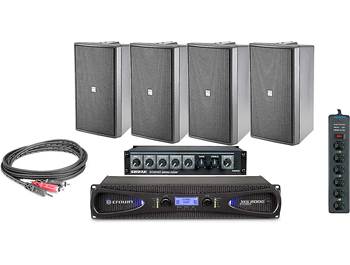One of the initial considerations when selecting a CCTV system is the type of cameras required. There are several types of devices on the market, such as bulb cameras, projectile cameras, and PTZ (pan-tilt-zoom) cameras. Dome devices are commonly employed for interior monitoring due to their discreet design, while bullet cameras are more visible and are typically employed outdoors. PTZ cameras offer the capability to magnify in on particular locations and can be operated remotely. Evaluating the specific surroundings and the locations that require monitoring will help determine which kind of device is best suitable.
Another important factor to take into account is the clarity of the cameras. Increased resolution devices offer clearer pictures, which can be essential for recognizing individuals or features in a setting. Common clarities include standard resolution (SD), high definition (HD), and superior resolution (UHD). Although higher clarity cameras may arrive at a higher price, they can considerably enhance the efficacy of a surveillance system. It is also crucial to consider the lighting conditions in the location being observed, as some cameras are more suited to manage low-light conditions than others.
Storage options are also a critical aspect of CCTV setups. Footage footage can consume up a significant amount of storage, so it is essential to choose a setup here with adequate capacity options. Many setups offer online options, which allows for remote retrieval to footage and can provide additional security in the event of theft or destruction to the tangible device. Alternatively, local options, such as electronic video recorders (DVRs) or internet footage devices (NVRs), can be used. Understanding the capacity requirements based on the number of devices and the desired holding duration for footage is crucial for efficient monitoring.
Lastly, the installation and upkeep of the CCTV system should not be overlooked. Professional setup can guarantee that devices are placed in optimal spots for best coverage. Additionally, regular upkeep is necessary to keep the system operating effectively. This includes inspecting camera angles, wiping optics, and ensuring that programs is current. Some setups also provide remote monitoring capabilities, allowing users to view live recordings from their mobile devices or computers. This feature can provide reassurance and enhance the general efficacy of the security system.

In summary, selecting the ideal CCTV system involves thoughtful evaluation of multiple aspects, including camera types, resolution, capacity choices, and setup. By understanding these components, individuals and organizations can choose a setup that effectively satisfies their safeguarding needs. A thoughtfully designed CCTV setup not only assists deter crime but also provides important proof when necessary, making it an essential expenditure for protection and safeguarding.